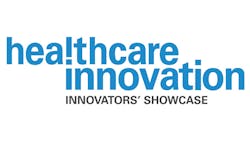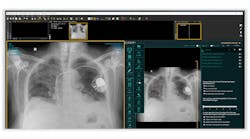In a moving speech to the 2016 Health Datapalooza conference in Washington, D.C., Vice President Joe Biden spoke passionately about his son, Beau Biden, who died in 2015 from brain cancer. He used some details from the experience of Beau Biden’s treatment to express disappointment with the state of interoperability the industry has achieved. He said it was extremely frustrating that the imaging data couldn’t be sent from Walter Reed Hospital in Washington, D.C., to MD Anderson Cancer Center electronically because they were on different systems, and disks had to be sent back and forth.
Fast-forward a few years and most health systems are still struggling with sharing images. Imaging is one of the most-costly components of patient care and is historically fraught with redundancy due to constraints with image sharing among providers.
Health systems often cope with this challenge by burning a CD and handing it to the patient to transport to primary care physicians, specialists and other members of their care team. In August 2018, recognizing that the need for providers and patients to seamlessly share images has never been more apparent, Penn Medicine in Philadelphia made a significant change to its portal for external physicians, called PhysicianLink, to allow referring physicians outside of the Penn Medicine system to securely view radiology images.
Historically, physicians outside the institution who referred patients to Penn Medicine for diagnostic radiology studies could only review the text results of those studies. Now, along with the diagnostic result, a link appears that permits the external provider to launch a PACS image directly using the same clinical imaging viewer as the health system.
In a recent interview, Christine VanZandbergen, associate vice president of IS applications at Penn Medicine, describes the challenge the innovative project addressed. “When patients were referred from other providers and became part of the Penn community of patients, we didn’t have a good way to get those images back to their primary care team,” she says. “They are the ones who have a longer-term relationship with the patient. And while they were able to see a report, from a clinical perspective, it is important to have not just a report, but also the ability to view those images and have those conversations with the patient. Trying to do that from a report doesn’t provide the same level of care as being able to view the actual images.”
With these external partners saying it would be great to see the images alongside the interpretations or reports, Penn Medicine teams worked with their vendor Epic Systems on how they could expose them in the PACS image viewing system in a secure manner. Now once physicians log in to the physician portal, alongside the written interpretation is a link that they can click that presents the patient image inside Penn Medicine’s PACS viewer. Penn Medicine is one of only a handful of health systems in the country offering this capability.
To ensure a successful deployment and adoption of this technology a multidisciplinary team of IT professionals, physicians, radiology leaders and physician outreach liaisons were engaged as part of the project team. The pilot team worked with Chester County Hospital as well as a large New Jersey-based orthopedic practice group that refers many of its patients to Penn Medicine.
Karen Pinsky, M.D., chief medical information officer at Chester County Hospital, notes, “PhysicianLink enables our referring providers to access important clinical information for their patients. Practicing clinicians gain context by viewing actual images to support clinical decision making, rather than simply reading the interpretations. Patients appreciate that their referring provider has a deep dive view of their data.”
Having the actual images brings tremendous value to office-based practitioners who are part of a patient’s care team, and patients who now have an additional opportunity to look at the images alongside their provider.
Since the launch a year ago, almost 9,000 unique images have been viewed through PhysicianLink. “The first month or two we had a few hundred per month,” VanZandbergen says. “Now we are well over 1,000 per month.” Among the benefits are that the physician can have immediate access to images after the exam is performed with no wait time for a DVD to be produced and delivered, and clinical decisions can be informed by timely image availability, without having to rely solely on the diagnostic report, resulting in improved patient care.
Next up for innovation in PhysicianLink, VanZandbergen says, is responding to requirements of the Protecting Access to Medicare Act (PAMA), which goes into effect on Jan. 1, 2020. PAMA requires that physicians ordering advanced imaging exams consult appropriate use criteria through electronic clinical decision support (CDS) tools. “We plan to drive our referring provider base to PhysicianLink as our preferred way for them to order radiology studies, and we will institute the decision support module within that.”



